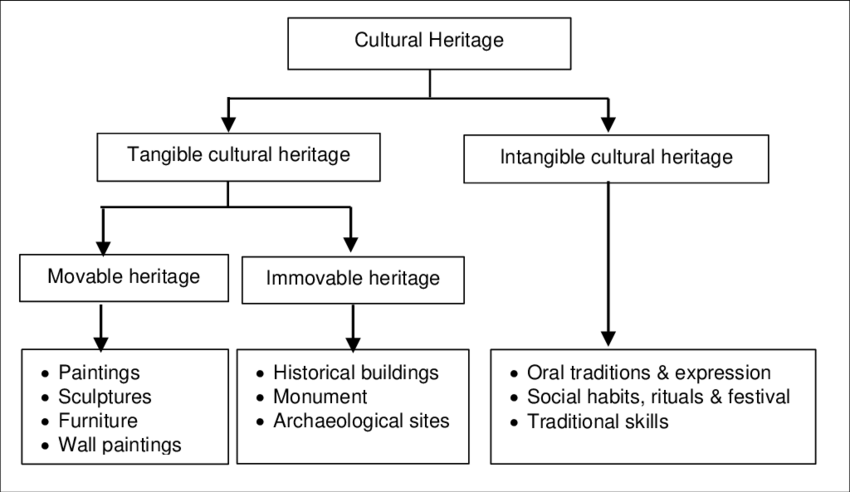- Home
- Prelims
- Mains
- Current Affairs
- Study Materials
- Test Series
 EDITORIALS & ARTICLES
EDITORIALS & ARTICLES
Safeguarding of India's Cultural Heritage
Recently, a parliamentary panel recommended setting up a dedicated cultural heritage squad (Multi-departmental Task Force) for the recovery of stolen antiquities, with a team of officers who can be trained on various aspects of retrieval.
The task force should include senior officials from the Ministry of Home Affairs (police and investigation), Ministry of External Affairs (for coordination with foreign governments), Archaeological Survey of India (ASI) and senior scholars and experts.
Several countries, such as Italy, Canada, the Netherlands, the US, Scotland, Spain and France, have established dedicated cultural heritage squads with a team of experts that focus their efforts singularly on tracking and recovering stolen antiquities.

Antiquity
- TheAntiquities and Art Treasures Act of 1972, which came into effect on April 1, 1976, defines "antiquity" as any object or work of art that has been in existence for at least 100 years.
- This includescoins, sculptures, paintings, epigraphs, detached articles, and other items that reflect science, art, literature, religion, customs, morals, or politics from a bygone era.
- For “manuscript, record or other document which is of scientific, historical, literary or aesthetic value”, this duration is “not less than 75 years.”
- Protection Initiative:
- Indian:
- In India,Item-67 of the Union List, Item-12 of the State List, and Item-40 of the Concurrent List of the Constitution deal with the country’s heritage.
- Before Independence, the Antiquities (Export Control) Act was passed in April 1947 to ensure that no antiquity could be exported without a license.
- The Ancient Monuments and Archaeological Sites and Remains Actwas enacted in 1958 to protect ancient monuments and archaeological sites from destruction and misuse.
- Global:
- UNESCO formulated the 1970 Conventionon the Means of Prohibiting and Preventing the Illicit Import, Export and Transfer of Ownership of Cultural Property.
- The United Nations Security Council also passed resolutions in 2015 and 2016 calling for the protection of cultural heritage sites in conflict zones.
- Indian:
Current Scenario for Stolen Antiquities in India
- According to records accessed under the Right To Information (RTI) Act,only 486 antiquities have been reported as missing from the 3,696 monuments protected and maintained by the ASI since Independence.
- According to the ASI list, 322 of the 486 antiquities were reported missing since 1976,when India implemented the Antiquities and Art Treasure Act of 1972.
- Over the course of 15 years since its establishment, the National Mission on Monuments and Antiquities (NMMA), 2007 has only been able to document approximately 16.8 lakh antiquities, accounting for about 30% of the estimated total of 58 lakh antiquities.
- Monuments and sitesmaintained by the ASI are only a small percentage of the total number of archaeological sites and monuments across the country.
- As per UNESCO’s estimates, more than 50,000 art objects were smuggled out of India till 1989.
- Since 2014, 305 antiquities have beenbrought back to India from abroad since 1976, including 292
- Following therecent visit of the Prime Minister of India to the US, a total of 105 antiquities were handed over to India by the US.
Challenges Related to Antiquities in India
- Illegal Trade and Smuggling:One of the most significant challenges is the illegal trade and smuggling of antiquities. Many valuable artifacts are looted from archaeological sites and temples and smuggled out of the country.
- Lack of Documentation: Proper documentation of antiquities is crucial for their preservation and retrieval in case of theft. However, there are shortcomings in the documentation efforts, leading to difficulties in identifying and recovering stolen artifacts.
- Inadequate Security Measures:Many museums and archaeological sites lack proper security measures, making them susceptible to theft and pilferage of antiquities.
- Lack of Awareness and Community Involvement:The lack of awareness among local communities about the significance of cultural heritage and their role in protecting it can contribute to instances of theft and trafficking.
- Inadequate Funding:The preservation and protection of antiquities require financial resources for conservation, documentation, research, and retrieval efforts. Inadequate funding can hinder these essential activities.
- Challenges in Retrieving Antiquities from Foreign Countries:Recovering stolen antiquities from foreign countries involves complex legal and diplomatic processes. The retrieval process may face resistance from the host country and may be subject to international laws and conventions.
- Lack of a Comprehensive Database:A comprehensive national database of antiquities is essential for effective management and retrieval efforts. The absence of such a database can cause problems in identifying and tracking stolen items.
Road ahead
- Local Awareness and Community Involvement: The panel emphasizes the role of local awareness and community consciousness in preventing the theft and trafficking of cultural artifacts.
- The community should be encouraged to report any instances of theft or suspicious activities related to antiquities.Local awareness can be instrumental in preventing further losses of cultural heritage.
- Enhancing the Budget for Art and Culture Promotion:The panel points out that countries like China, the US, Singapore, and Australia allocate a higher percentage of their budgets towards promoting art and culture.
- The panel recommends increasing the budget for preserving cultural heritage in India.
- Role of Civil Society Organizations and CSR:To strengthen efforts for preserving and promoting cultural heritage, the panel suggests involving civil society organisations and Corporate Social Responsibility (CSR)
- These entities can contribute to spreading awareness about heritage preservation and can also provide financial supportto conservation efforts.









 Latest News
Latest News General Studies
General Studies